|
|
Doppler Blood Pressure Basics |
| |
|
| |
Dr.
Bob Stein |
| |
|
| |
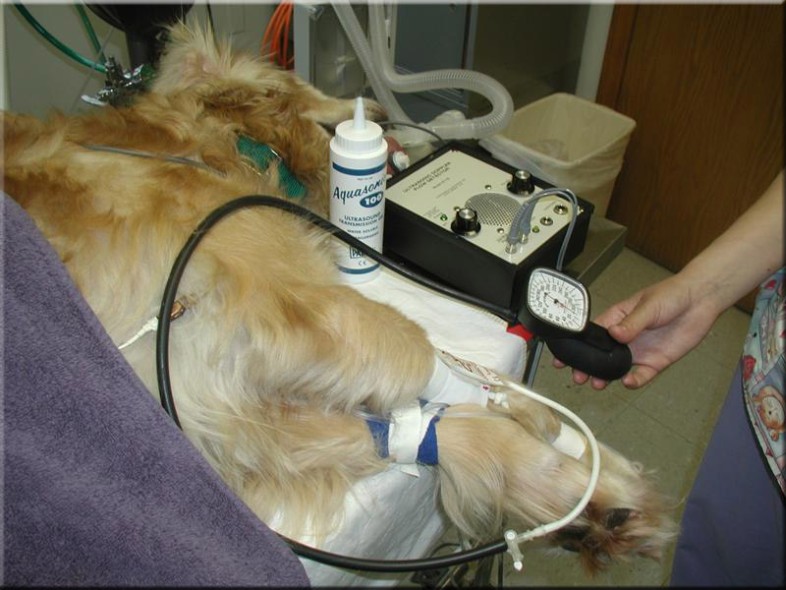 |
| |
|
This is how the general setup should look. |
| |
|
|
| |
|
|
| |
|
|
| |
|
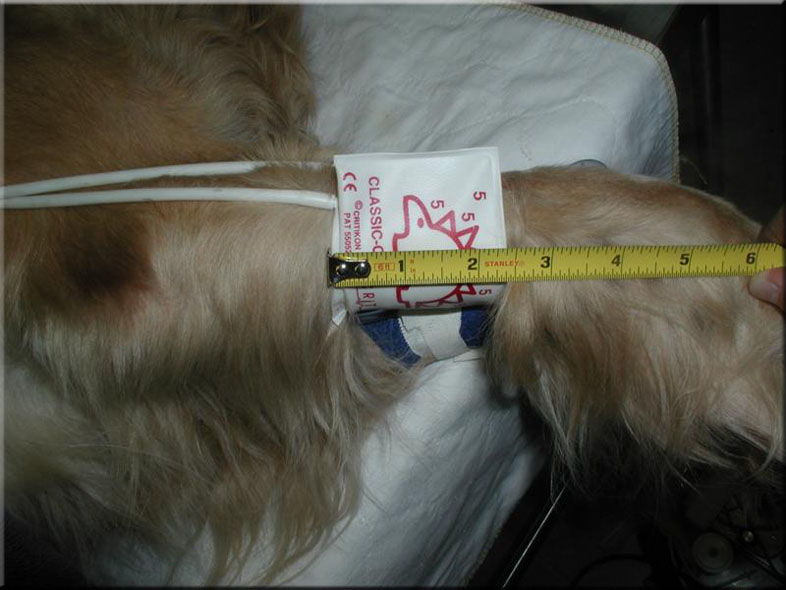 |
| |
|
Cuff width should be 40% of the appendage
circumference for dogs. |
| |
|
|
| |
|
|
| |
|
|
| |
|
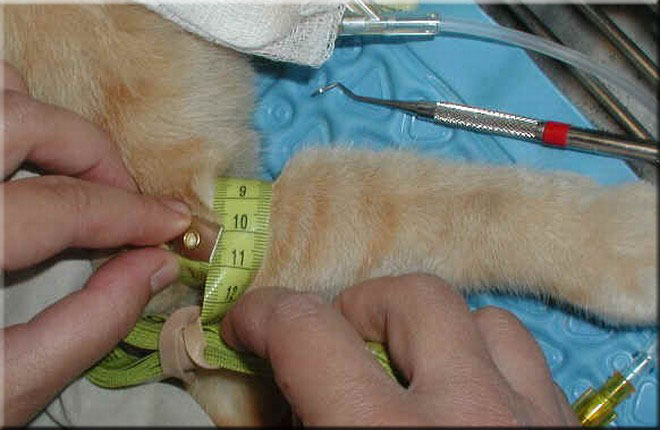 |
| |
|
|
| |
|
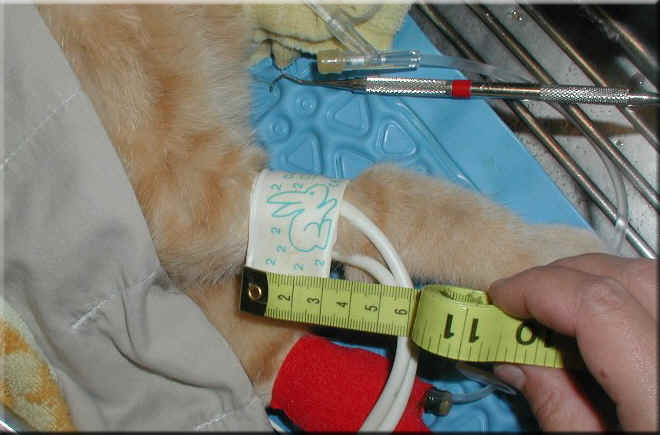 |
| |
|
Cuff width should be 30% of the appendage
circumference for cats. |
| |
|
|
| |
|
|
| |
|
|
| |
|
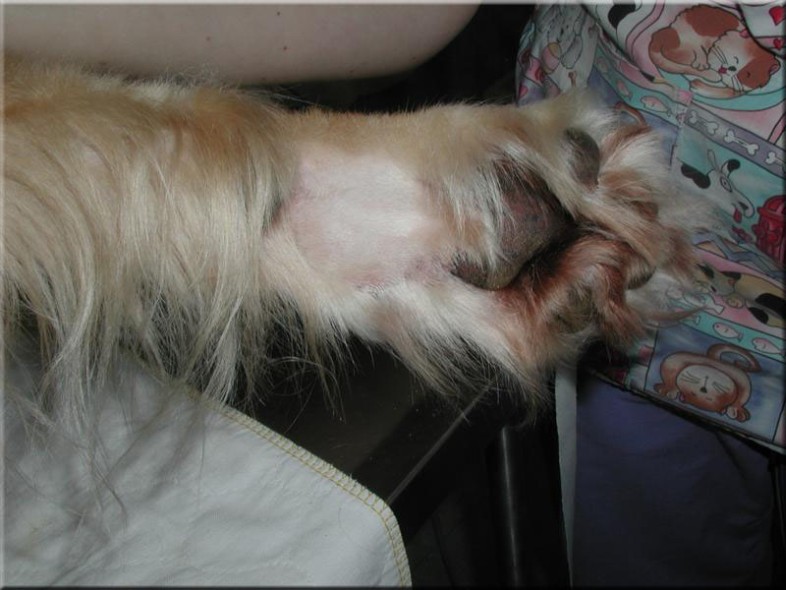 |
| |
|
Clip the fur over the metacarpal or
metatarsal area. |
| |
|
|
| |
|
|
| |
|
|
| |
|
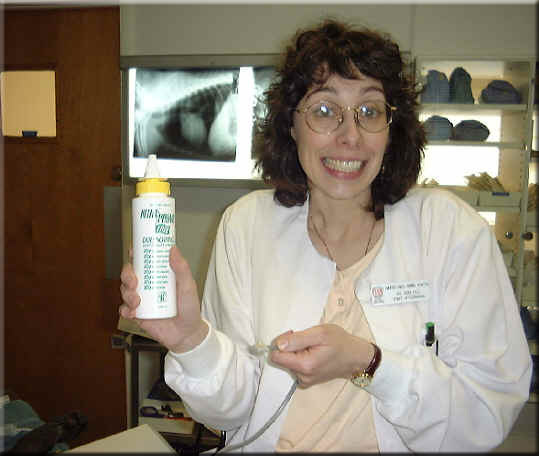 |
| |
|
Use ultrasound transmission gel - do NOT
use ECG electrode products or damage to the probe may result. |
| |
|
|
| |
|
|
| |
|
|
| |
|
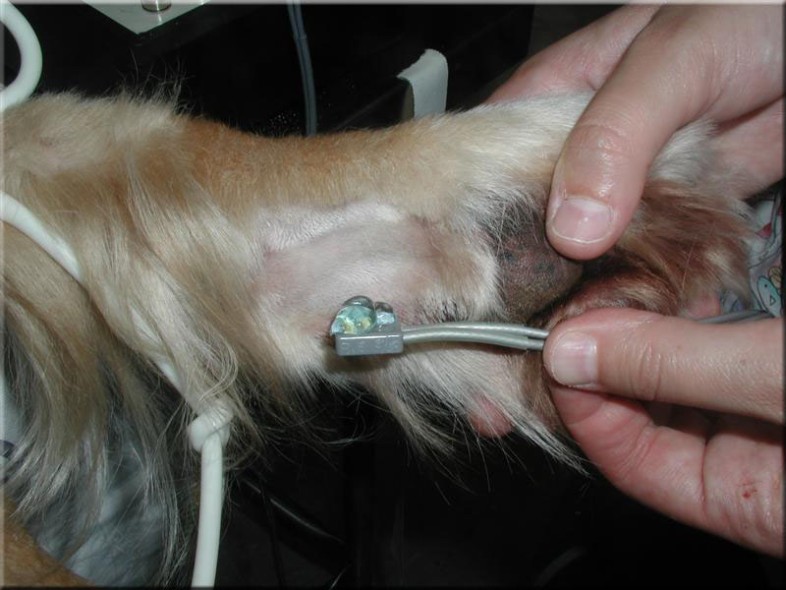 |
| |
|
Apply a generous amount of the gel to the
probe. |
| |
|
|
| |
|
|
| |
|
|
| |
|
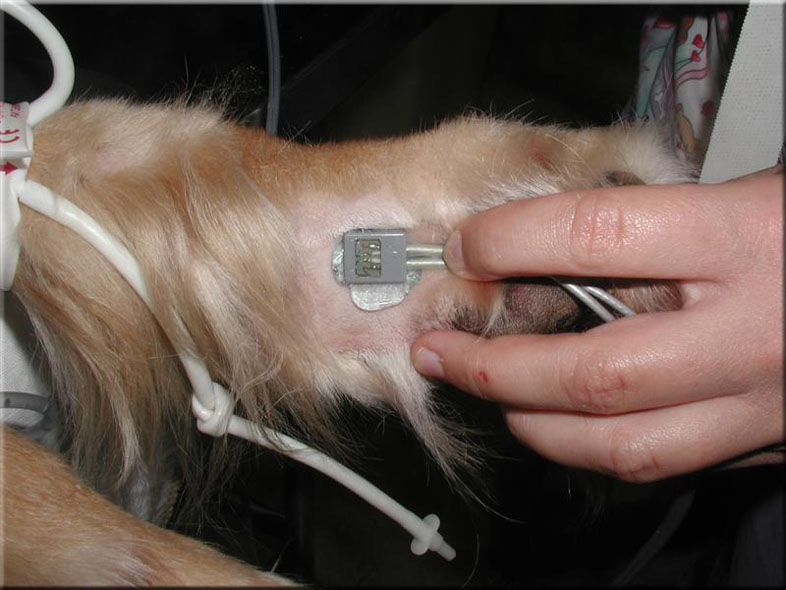 |
| |
|
Apply the probe to the caudal metacarpal or
metatarsal area. |
| |
|
|
| |
|
|
| |
|
|
| |
|
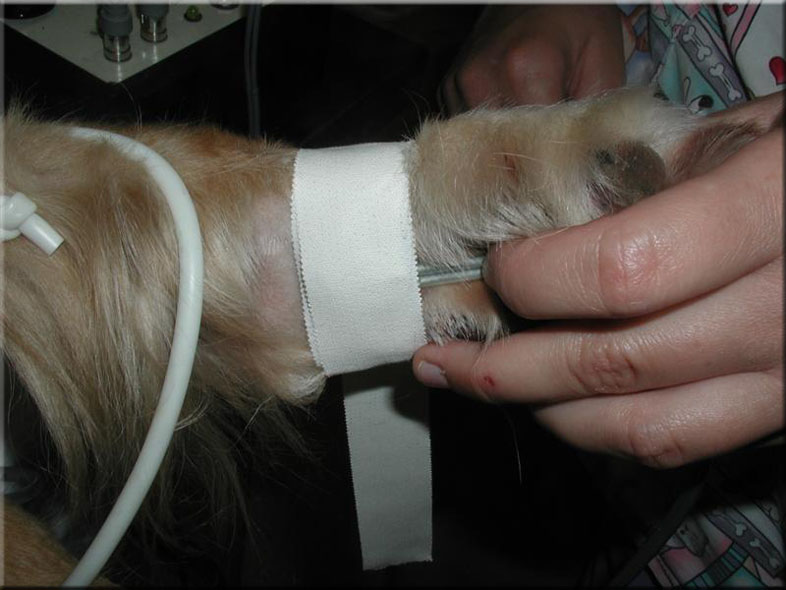 |
| |
|
Wrap 1" white tape around the paw and
probe with moderately firm pressure. Do NOT turn the monitor on at this point! |
| |
|
|
| |
|
|
| |
|
|
| |
|
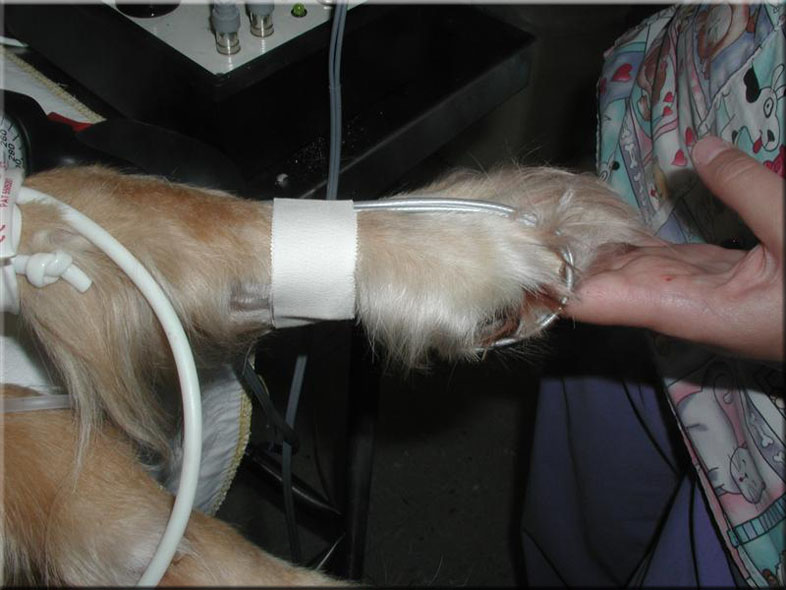 |
| |
|
Wrap the probe wire around the distal paw and over the
dorsum incorporating it into the white tape. After making sure the volume
knob is turn fully to the left, turn on the Doppler. Then turn up the
volume to check the signal.
You should have a good signal in 90% of your patients
without having to sweat the initial probe placement. Just tape it in place
and check the signal. You can always go back in those patients that don't
initially have an adequate signal and hunt for a better location. |
| |
|
|
| |
|
|
| |
|
|
| |
|
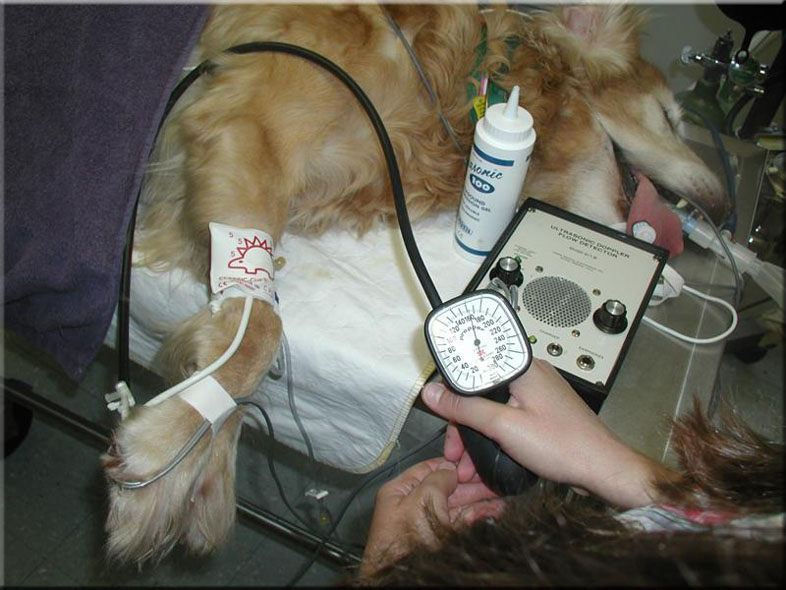 |
| |
|
Attach the manometer to a single hose cuff using a
three way valve. Pump the pressure up until all signal is lost. Then
gradually release the pressure at about 3 mmHg per second listening for
the return of signal. |
| |
|
|
| |
|
|
| |
|
|
| |
|
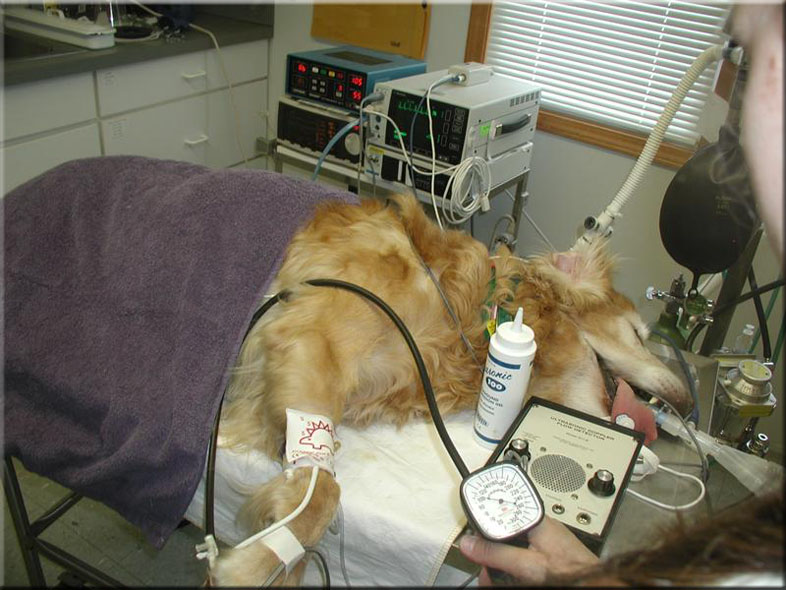 |
| |
|
We generally have a Doppler and an oscillometric or
direct arterial blood pressure monitor in place on every patient. If one
monitor is acting up, the other will, hopefully, fill the role adequately. |
| |
|
|
| |
|
|
| |
|
|
| |
|
 |
| |
|
Store the monitor with the transducer cable plugs in
place and the wire curled with gentle curves - tight turns and
twists can lead to premature failure of the transducer. Clean the
transducer with water or chlorhexidine solution and protect with a gauze
square secured in place. Store the monitor with the charger in place for
maximum battery life. |
| |
|
|
| |
|
|
| |
|
|
| |
|
|
| |
|
|
| |
|
Additional Resources |
| |
|
|
| |
|
|
| |
|
Managing Hypotension
|
| |
|
|
| |
|
|
| |
|
|
| |
|
|
| |
|
|
| |
|
Overviews of Doppler Technology and
Use |
| |
|
|
| |
|
 |
| |
|
|
| |
|
 |
| |
|
|
| |
|
|
| |
|
|
| |
|
|
| |
|
|
| |
|
Doppler Probe Care |
| |
|
|
| |
|
 |
| |
|
|
| |
|
|
| |
|
|
| |
|
Return to top of page |
| |
|
|
| |
|
|
| |
|
|
| |
|
|
| |
|
|
















